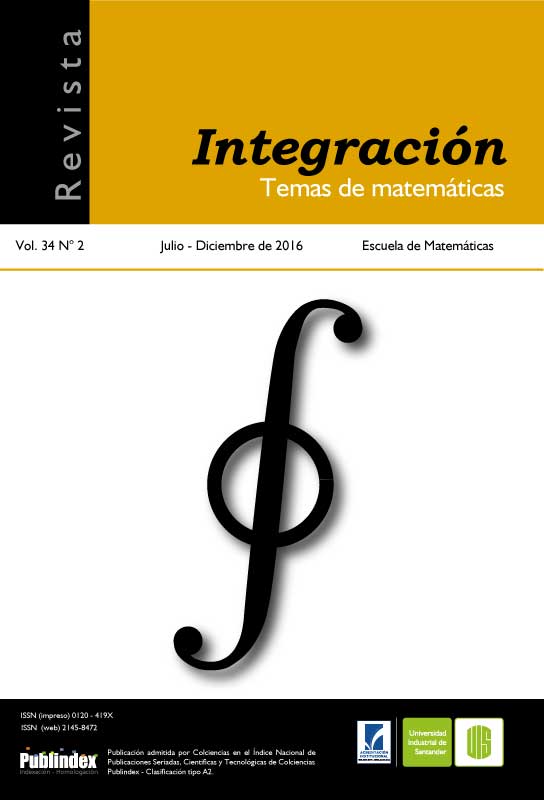Publicado 2016-12-12
Palabras clave
- Superficies de Riemann,
- automorfismos
Cómo citar
Derechos de autor 2016 Marby Bolaños Ortiz, Maribel Díaz, Martha Romero Rojas

Esta obra está bajo una licencia internacional Creative Commons Atribución 4.0.
Resumen
Pavlos Tzermias en su artículo "The group of automorphisms of the Fermat curve"(ver [7]), prueba que el grupo de automorfismos de las curvas de Fermat proyectivas en característica 0 es el producto semidirecto de la suma directa de 2 copias del grupo cíclico de orden n y el grupo simétrico de 3 letras. En este artículo se presenta una prueba alternativa de este hecho accesible para alguien con conocimientos básicos en superficies de Riemann y teoría de grupos. Además, se incluye la correspondencia geométrica de la acción.
Para citar este artículo: M. Bolaños Ortiz, M. Díaz, M. Romero Rojas, The group of automorphisms of the Fermat curve, Rev. Integr. Temas Mat. 34 (2016), No. 2, 133-138.
Descargas
Referencias
- Bauer I., Garion S. and Vdovina A., Beauville surfaces and groups, Springer Proc. Math. Stat. 123, Springer, Cham, 2015.
- Broughton S.A., "Classifying finite group actions on surfaces of low genus", J. Pure Appl. Algebra 69 (1991), No. 3, 233-270.
- Hurwitz A., "Ueber algebraische Gebilde mit eindeutigen Transformationen in sich", Math. Ann. 41 (1892), No. 3, 403-442.
- Leopoldt H.-W., "Über die Automorphismengruppe des Fermatkörpers", J. Number Theory 56 (1996), No. 2, 256-282.
- Macbeath A.M., "On a theorem of Hurwitz", Proc. Glasgow Math. Assoc. 5 (1961), 90-96.
- Miranda R., Algebraic curves and Riemann surfaces, Graduate Studies in Mathematics 5, American Mathematical Society, Providence, RI, 1995.
- Tzermias P., "The group of automorphisms of the Fermat curve", J. Number Theory 53 (1995), No. 1, 173-178.
- Volklein H., Groups as Galois groups. An introduction, Cambridge Studies in Advanced Mathematics 53, Cambridge University Press, Cambridge, 1996.
